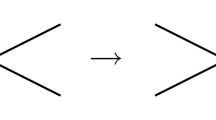Abstract
It has been noted that many realistic graphs have a power law degree distribution and exhibit the small-world phenomenon. We present drawing methods influenced by recent developments in the modeling of such graphs. Our main approach is to partition the edge set of a graph into "local" edges and "global" edges and to use a standard drawing method that allows us to give added importance to local edges. We show that our drawing method works well for graphs that contain underlying geometric graphs augmented with random edges, and we demonstrate the method on a few examples. We define edges to be local or global depending on the size of the maximum short flow between the edge's endpoints. Here, a short flow, or alternatively an ℓ-short flow, is one composed of paths whose length is at most some constant ℓ. We present fast approximation algorithms for the maximum short flow problem and for testing whether a short flow of a certain size exists between given vertices. Using these algorithms, we give an algorithm for computing approximate local subgraphs of a given graph. The drawing algorithm we present can be applied to general graphs, but it is particularly well suited for small-world networks with power law degree distribution.
Similar content being viewed by others
Author information
Authors and Affiliations
Corresponding authors
Additional information
An erratum to this article can be found at http://dx.doi.org/10.1007/s00453-006-3160-3
Rights and permissions
About this article
Cite this article
Andersen, R., Chung, F. & Lu, L. No-Three-in-Line-in-3D. Algorithmica 47, 379–397 (2007). https://doi.org/10.1007/s00453-006-0160-2
Received:
Published:
Issue Date:
DOI: https://doi.org/10.1007/s00453-006-0160-2




